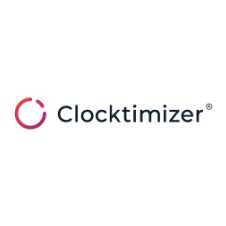Clocktimizer: Best practices for tech roll-outs in large firms
Welcome to the second piece in our change management blog series. Across the series we will be addressing practical steps to introduce improvements at your firm. In the coming weeks we speak to industry insiders to offer advice on successfully implementing new technology. We will also look at how to monetise change in your firm and offer our five rules for adoption. This week we are examining one of the most important (and yet often poorly handled) aspects of change management. The roll-out.
Roll outs are a perfect storm for law firms. They involve the synchronisation of multiple moving parts. IT must work in step with different teams, external vendors and all under the oversight of the executive. Worse still, the success of the roll-out can make or break a piece of technology. Poor implementation, a bad use case, or simply malfunctioning technology will make it even harder to foster adoption.
At Clocktimizer we have overseen our fair share of roll-outs. During our years of operation we have learned what works, and what often doesn’t in large firms. As such, this week we will be looking at our best practices for any technological roll-out. We will also offer advice on how to successfully communicate that change internally.
Before you begin
Many roll-outs are doomed to failure before they have even begun. This often comes down to the implementation strategy. “Request for Proposals”, or RfPs, have a lot to answer for in this respect. The process is long, and the list of requirements are so varied that any technology which claims it is able to meet the requirements is likely to be cumbersome to introduce. Additionally, RfPs try to solve as many problems as possible at once. This means you are unable to implement them in a small, scalable way. Instead they must be rolled out to everyone in the firm, simultaneously. This is a recipe for disaster.
The most successful roll-outs are managed incrementally. As we explored last week, humans are incredibly change averse. This is compounded in an industry which is notoriously wary of risk, with a managerial structure designed to maintain the status quo. Instead of fighting against these behavioural traits, lean into them by slowly introducing new technology. Once initial users of the technology have confirmed its use cases, implementation can be scaled up. Ideally, with your initial users acting as project champions.
Incremental roll-outs have a second benefit. When introducing technology to a small test group first, you must ensure that you understand what benefit it will bring. You will then need to be able to identify who in the firm will benefit most from that use case. This exercise will help you focus your change management efforts. If you cannot identify a good use case, for a specific group of users, then is the technology really worth introducing? Testing this hypothesis on this small group of users will also allow you to keep initial costs low (and avoid the sunk cost fallacy) on technology which performs poorly on closer inspection.
Roll-out best practices
The success of your roll-out can be distilled down to a few key factors:
How complex is the implementation of the technology itself?
How well have you mapped out the implementation?
Do you have sufficient resources set aside to manage the implementation?
Have you created key roles to streamline the implementation process?
For each factor, there are a number of corresponding best practices which can be applied to ensure a successful roll-out. First and foremost is to ensure any new technology you introduce has a streamlined implementation process. At Clocktimizer, we have automated the vast majority of our implementation. This means our product can be up and running very quickly, and we require very little resources from the firm itself. This should be standard practice.
Where possible, use cloud based solutions as they will reduce the IT burden for your firm. If you must work with on-premise installations, then walk through the implementation process with your vendor. It is advisable to speak to other firms who have implemented the technology to understand how complex the process was. Remember, a solution which is difficult to implement is likely to also be badly designed in other areas. Save yourself considerable worry by avoiding bulky technology from the beginning.
When mapping out your implementation schedule, use a good project roadmap to keep track of what should be happening and when. This way, you can allocate your resources at the right moment, and can avoid overworking any one department or group of people. At Clocktimizer, we always start with a basic project roadmap like the one below. You can tailor this to each new implementation and ensure that everything stays to schedule.
Hand in hand with the creation of a roadmap, comes resource mapping. This is akin to scoping a new matter. To properly map your resources you should be addressing not only what physical resources you will need (i.e. server space, processing power) but also what staffing resources. This includes a mapping assessment for all of the following groups:
IT staff – how much time will be needed for the initial implementation, and then for troubleshooting and updates
End users – how much time will be needed for initial training, follow up training and to assess the efficacy of the technology itself
Project managers – how much time will be needed in pre-planning, to oversee the implementation itself and to organise training sessions and evaluations
Project champions – how much time will be needed for training on the product, for sessions with new users to explain use cases and encourage adoption
Executives – how much time will be needed to update on the implementation of the project, and then to evaluate its success at the end of implementation
By thoroughly assessing the time needed from each group, you can make an implementation plan which is more accurate. Additionally, this open approach is likely to reduce friction later on in the process. Those in the project will not be surprised by a large chunk of work or training later on, disturbing their usual working routine. The additional work can be planned in advance, and optimised.
It is essential to determine key roles and seniority within an implementation project. Create project champions to act as the cheerleaders of the new product. Their role will be to explain use cases, and encourage adoption. Ensure that the head of the implementation has sufficient power in the firm to organise everything necessary for said implementation. This means that they must have sufficient authority to request IT resources, schedule testing across practice groups and be respected in order that the new technology has a chance to get off the ground. Finally, ensure that your knowledge management team is a part of this entire process. They will be able to record use cases, best practices for the technology itself and relay data between end users and senior management to determine the success of the technology.
Internal marketing best practices
Having successfully implemented a new technology, you still need to make sure people know about it. Internal marketing is essential for strong adoption and to get the most out of the product. Thankfully, it is also the perfect place to ask your vendor to step up and help.
Vendors undoubtedly know their technology better than you. They will have huge amounts of information, user manuals, guides and presentations ideal to explain and excite new users about a product. At your next partner conference, ask your vendor for a few freebies (who doesn’t like a new notebook?). Additionally, get them to share booklets introducing the product. They should be able to put together a product demo or presentation to ensure that senior management is on side before the technology is sitting on their computer.
Internally, use your knowledge management best practices to guide the introduction of the technology. If you have an intranet, highlight the product there. Ensure that you have a detailed description of how it works and its use cases on the internal directory. Create training days, which are smaller and more focused to one group of people and one use case. This avoids overwhelming people with information and you can expand adoption past the initial use case at a later stage. The key is to get people to rely on it for at least one essential task.
It is wise to look at remote training strategies as well as those in house. Not only are they helpful during the current Covid-19 outbreak, they are also useful for training people in satellite offices, or those who it is simply difficult to pin down. Consider hosting product webinars (again, your vendor should be able to manage this for you) to allow users to ask questions, and see what they can do with the product. User guides and booklets should be sent out to everyone who will have a use for the product. This can keep even those out of sight, up to date.
Finally, talk with your vendor about ongoing training and product updates. No piece of technology is static (or at least, no good piece of technology). Your vendor should have a way of informing you of product updates, and to train you on them. Regular update calls and training sessions should be planned as part of the ongoing lifecycle of the implementation. This way, you can keep the product fresh in the minds of those using it, and ensure that they always know of the latest developments and improvements.
Next week
Having examined how to roll-out technology successfully, next week we look at how to monetise those process improvements. We will explore build ROI calculations for new technology and the importance of KPIs when implementing change.



